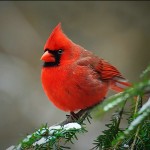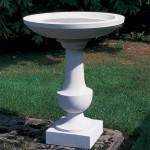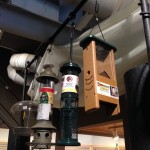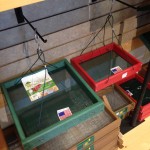 This blog is for the bird feeders! We often spend a lot of time on these articles discussing the aesthetics of the garden landscape, and focus on plant and building materials and how they can be used to create attractive outdoor environments. But an aspect of the garden that is often overlooked is how the garden landscape is used for food and shelter for wildlife, particularly birds.It’s easy to accomplish and very rewarding to build a garden with birds in mind. Mr. Holeman himself is an avid bird enthusiast. So, we thought we would help spread the word of his love for birds and inform you a little about how to make birds a part of your garden experience as well.
This blog is for the bird feeders! We often spend a lot of time on these articles discussing the aesthetics of the garden landscape, and focus on plant and building materials and how they can be used to create attractive outdoor environments. But an aspect of the garden that is often overlooked is how the garden landscape is used for food and shelter for wildlife, particularly birds.It’s easy to accomplish and very rewarding to build a garden with birds in mind. Mr. Holeman himself is an avid bird enthusiast. So, we thought we would help spread the word of his love for birds and inform you a little about how to make birds a part of your garden experience as well.
Plants play an important role in this, particularly native plants that are a food source for birds in the wild. Serviceberry, Viburnum, and Winterberry Holly are great ornamental plants that attract birds with the berries they produce. Other berry and seed producing plants are dogwood, Aronia, sumac, redbud, and crabapple. Paired with evergreen trees that keep birds well hidden from predators, the use of berry producing plants establishes a great start for a bird friendly garden. Additional plant materials that provide cover from the ground level to the tops of large shade trees provide the greatest range of feeding locations and will attract the greatest variety of birds. Perennials and annual flowering plants can produce abundant seed for birds to enjoy if they are not deadheaded at the end of the growing season.
Don’t forget to provide water for drinking and bathing. A small basin will provide an opportunity for birds to clean their feathers. Consider a bird bath with 
moving water to discourage insect larvae from developing, and to attract birds by sound. A small heater can be placed in the basin to keep the water from freezing in winter and allows birds to access the water year-round.
When you can’t provide enough food for the birds throughout the year with your berry or seed producing plants, a bird feeder can help supplement what your plants produce. There are a variety of different bird feeders available.
Tube Feeders have a variety of openings and perches and can dispense small seeds and are well-suited to species like finches. Hopper feeders are popular feeders that hold a lot of seed, so they don’t have to be restocked as often and will feed many birds at a time. Platform feeders can feed a variety of types of birds, but also are easily accessed by squirrels which can be a real nuisance if you don’t plan on feeding them as well. Nectar feeders, which most people associate with hummingbirds, also attract wrens, bluebirds and orioles. Suet feeders are especially useful in the winter months. These feeders hold a block of suet that is fed on by birds like woodpeckers and sapsuckers that typically feed on animal protein such as worms and larvae.
Bird feeding is a rewarding, but sometimes highly involved hobby. This article is just a basic introduction, but hopefully you’ve been encouraged to consider how you can feed the birds with your garden, and enjoy the beauty they bring to your garden landscape. We encourage you to visit your local wild bird store and learn more. And let us know how we can design and build a bird-friendly landscape for you.


